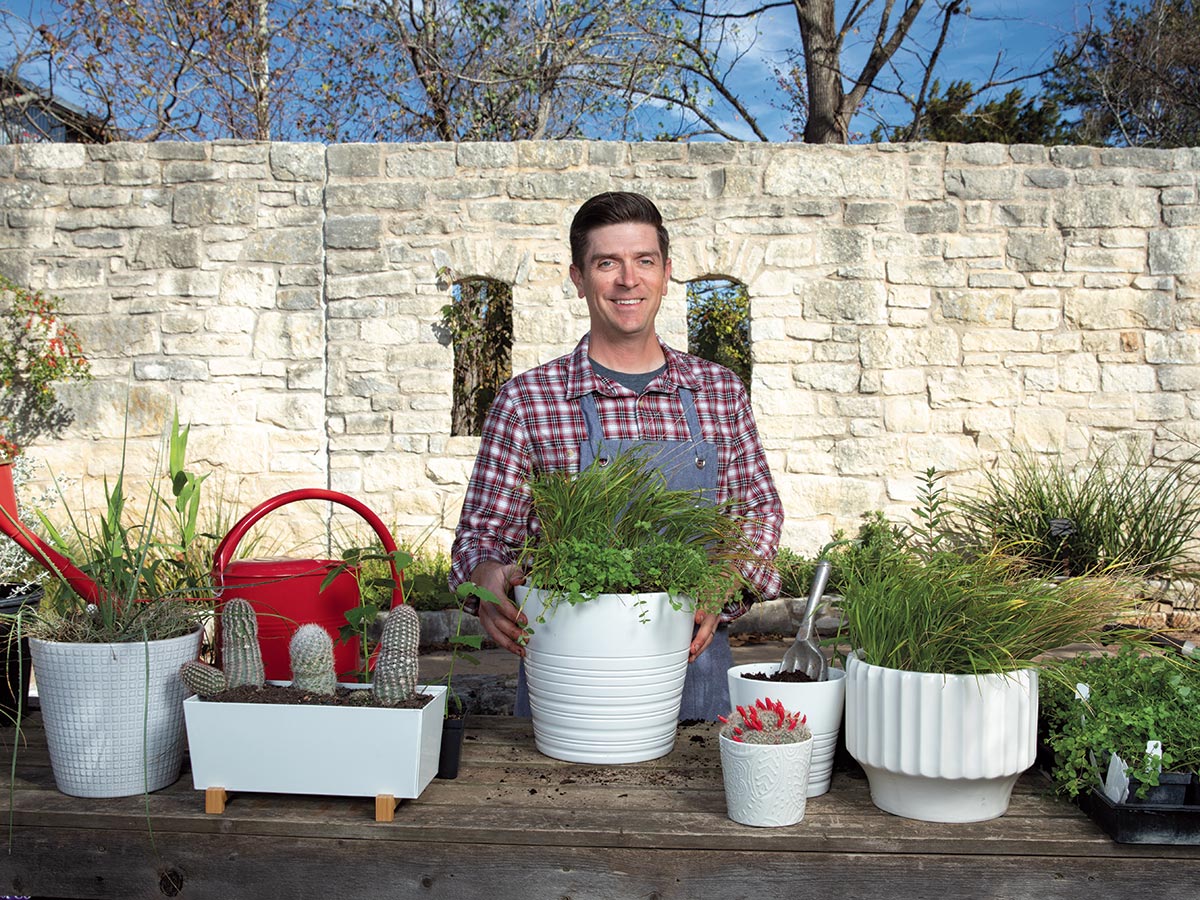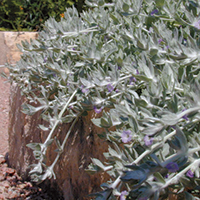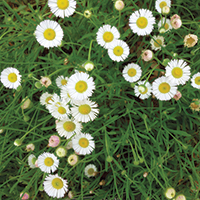Plant and Parcel

Wildflower Center Executive Director Patrick Newman demonstrates container gardening basics. PHOTO Brian Birzer
Whether you’re a budding green thumb, live in an apartment or condo and have limited space, or simply want to dress up your balcony or patio, using native plants in containers offers the perfect solution. They can also provide texture and color to existing gardens.
Containers come in a dazzling array of shapes, colors and sizes. They can be planted with a single plant or a combination of plants depending on the look you are trying to achieve. And they are mobile, giving you the option to change your mind about a plant’s position as often as you’d like — and take it with you when you move. It’s no wonder potted plants continue to be a popular choice for new and experienced gardeners alike.
The key to successful container gardening starts with a little homework. Before getting your hands dirty, find out which plants are native to your region by using the Wildflower Center’s Native Plants of North America database, being sure to narrow your search with the available filters (including state, size, sun requirements and more). Once you know which plants you’d like to include, heed these important tips to help ensure success.
CONTAINER SELECTION
Whichever containers you choose, be sure there’s at least one hole in the bottom to ensure proper drainage. Additionally, a small layer of pottery shards, crushed aluminum cans or gravel placed at the base of the container will facilitate drainage and keep soil from plugging up the hole(s) in the bottom.
SOIL MIXES
Plants in containers typically require loose soil that allows roots to easily grow. The soil should be fast draining yet retain moisture — quick drainage means roots won’t run the risk of suffocating in wet, soggy soil, and good moisture retention saves you from having to water constantly, especially during the heat of summer.
Regular garden soil, even if it has been well amended, is too dense for containers and should be avoided. A better bet is one of the packaged potting mixes (often including absorptive substances such as vermiculite) sold at many nurseries and garden centers. Bear in mind that while many native species are content with standard potting mixes, there are also some fussier species out there. Give heed to where a plant grows naturally and try to replicate those conditions as best you can.
PLANT DESIGN
One easy guideline for combining plants in a container is to include a “thriller,” a “spiller” and a “filler” (see recommended plants below). That translates to at least one focal-point plant (thriller), combined with several plants that spill over the edge of the container (spillers), and plants with smaller leaves and flowers that add color and round out the arrangement (fillers).
WATERING
Because they have only a limited amount of soil from which to draw moisture, container-grown plants require more frequent watering than those grown in the ground. Watering frequency depends on plant selection and external conditions. In hot or windy weather, some containers may need daily watering. In cooler weather, it may be sufficient to water weekly or even less often.
Feeling the soil and checking the appearance of your plants is the best way to determine a watering schedule. To check moisture, insert your index finger into the top inch or two of the soil and water when it feels dry. To water thoroughly, apply water over the entire soil surface until it flows out of the pot’s drainage hole(s). This moistens the entire soil mass and prevents dry pockets.
A final word of warning: An overwatered plant will look a lot like an underwatered one, and in the harshness of a summer day, plants may wilt from heat rather than lack of water. Check soil moisture often and be careful not to overwater.
Find plants and growing conditions here.
Fill ‘Er Up!
Our Recs for Texas Container Plants

American century plant PHOTO Eric Beckers
THRILLERS
Sun to Part Sun
Agave spp.
Autumn sage (Salvia greggii)
Blue grama (Bouteloua gracilis)
Spineless prickly pear (Opuntia ellisiana)
Part Shade to Shade
Rock rose (Pavonia lasiopetala)
Scarlet sage (Salvia coccinea)

Woolly stemodia PHOTO Joseph Marcus
SPILLERS
Sun to Part Sun
Gregg’s dalea (Dalea greggii)
Nimblewill (Muhlenbergia schreberi)
Silver ponyfoot (Dichondra argentea)
Texas frogfruit (Phyla nodiflora)
Woolly stemodia (Stemodia lanata)
Part Shade to Shade
Cherisse (Callisia micrantha)
Horseherb (Calyptocarpus vialis)

Prairie fleabane PHOTO Lee Page
FILLERS
Sun to Part Sun
Annual phlox (Phlox drummondii)
Black dalea (Dalea frutescens)
Blackfoot daisy (Melampodium leucanthum)
Prairie fleabane (Erigeron modestus)
Part Shade to Shade
Columbine (Aquilegia spp.)
Meadow sedge (Carex perdentata) and other sedges (Carex spp.)
Texas baby blue-eyes (Nemophila phacelioides)
